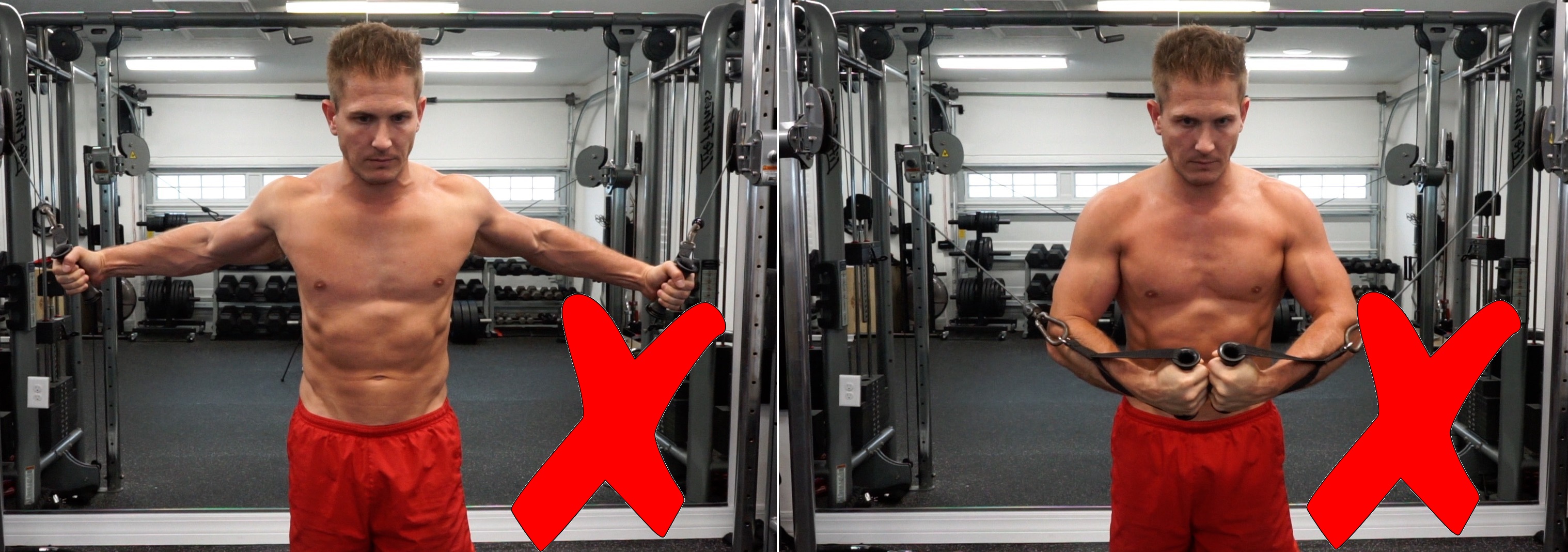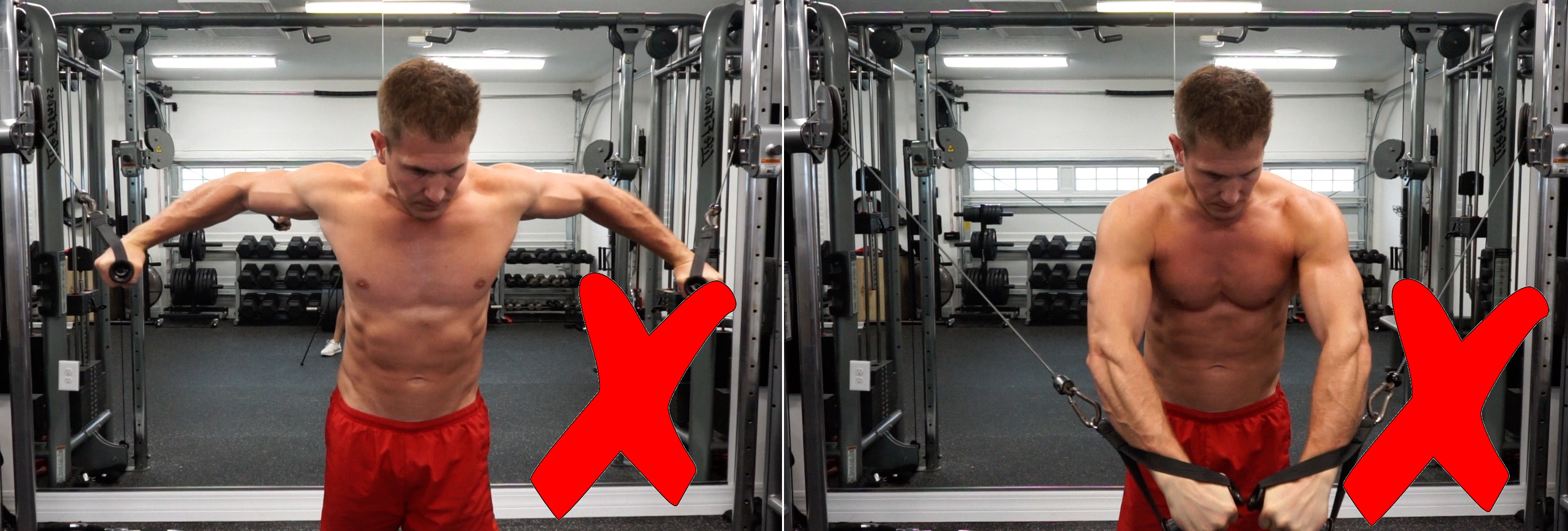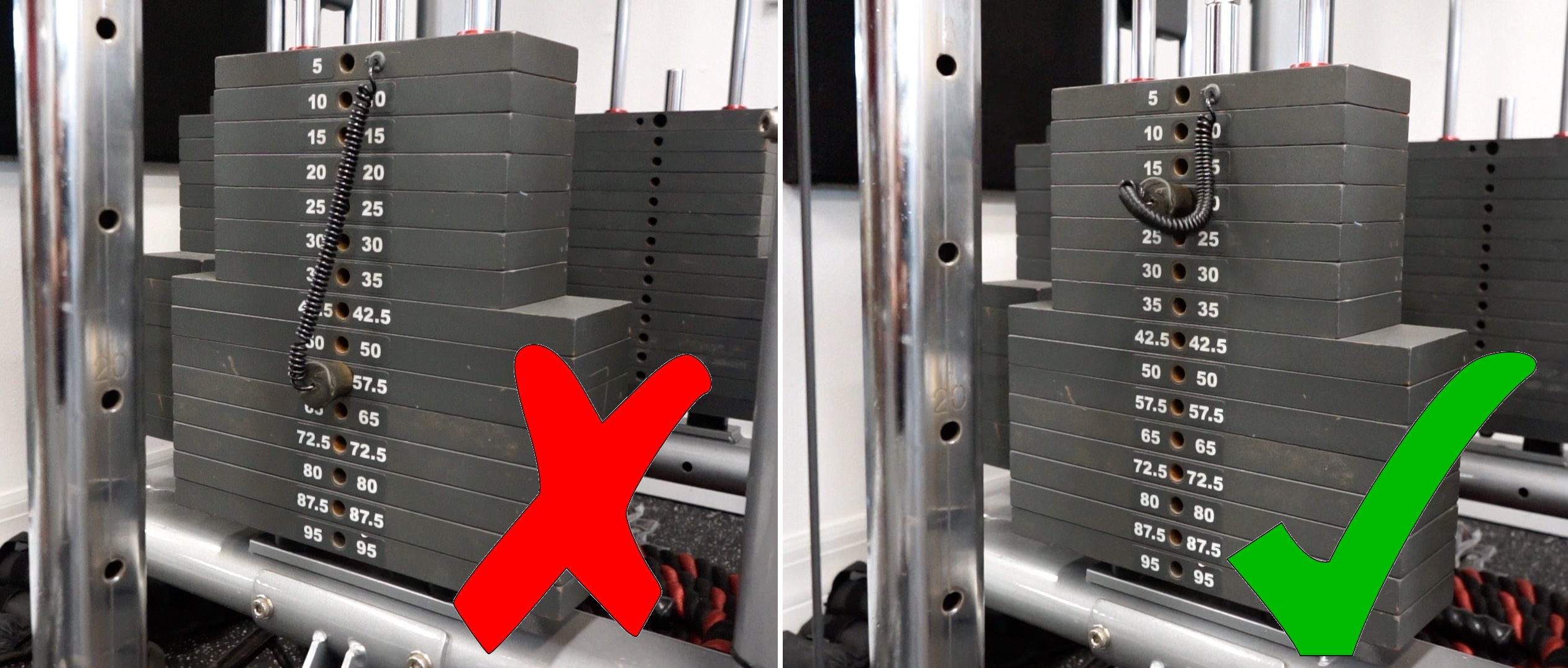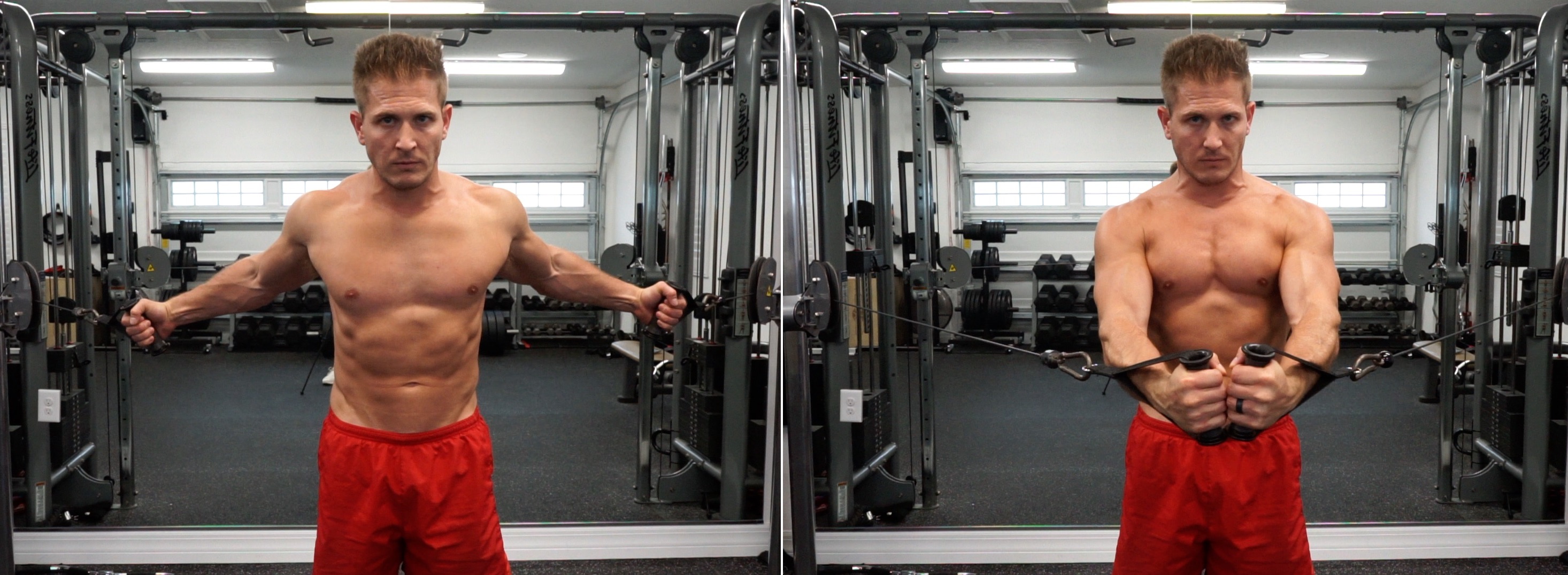Chest Flys Like This Are BAD! Fix Now!
More Instagram Influencer Stupidity
Today we’re going to go over how NOT to do cable flys, as many of you have probably seen on Instagram (IG) lately, compared with how to PROPERLY do cable flys. Many of you may have seen some ‘influencers’ on IG doing this exercise and completely butchering because they say it “works for them”. However, just because it ‘works’ for them, that doesn’t mean that EVERYONE should be doing it that way. There are WRONG and RIGHT ways to perform this exercise and I’m going to go over both right now.
Mistake #1: Overloading The Exercise
This is probably the most common mistake I see where people drastically overload with the weight they’re using and completely mess up their form. You should only ever have a very slight bend in your elbow. If you have a major bend in your elbow, you’re doing it wrong.

And the only reason anyone will typically have a major bend in their elbow is that their ego is too big to lower the weight and do the exercise properly.
If you want to overload your chest, do a bench press. The cable chest fly on the other hand is for lighter weight, either at the start of your workout to warm up your chest, or at the end of your workout as a finisher once your chest is already fatigued.
Proper form for a cable chest fly should be done with your shoulders back and your shoulder blades packed / retracted and your chest up, while maintaining just a slight ben in your elbows throughout the entire movement. What tends to happen with a lot of people is they will start off with this form, but after a few reps, the weight is too heavy and they’ll start to fall forward and their shoulders will become protracted.

Then the weight is mainly going through the shoulders rather than the chest.
Mistake #2: Too Much Weight = Partial Reps
When people try to lift too much weight, you get the half rep fly. The elbows end up bent far too much, which means the movement because a half press, half fly. However, the fly should be the entire range of motion where there is a slight bend in the elbows and you can flex and squeeze your chest the entire time. There’s no point in having your elbows bent so much that you are pressing for half of the movement (or more). If this is something you’re doing now, you need to lower the weight.

You’re better off just doing an ACTUAL bench press if you have enough power to be pressing a lot of weight on the cables, then come back to the flys later.
Proper Form: High-To-Low Fly
The cables don’t need to be super high for this variation. A lot of people will put the cables as high as they possibly go, but they really only need to be as high as your own head. If you’re training with a friend who is taller than you and you’re both doing flys, you should be adjusting the height between sets so it’s set perfectly for each of you.

Proper Form: Middle Chest Fly
For this variation, the cable should be set up so that your arm is going to be going across your chest. Just make sure that you are using FULL RANGE OF MOTION.

Proper Form: Low-To-High Fly
Just like with the high-to-low fly, this variation doesn’t need the cables right at the very bottom of the machine. Of course, with this variation, you’re bring the cables up while squeezing your chest, but still only keeping a slight bend in your elbows.

Conclusion
I know some of the content has been a bit hardcore lately, but I also know that a lot of you appreciate when I call out the BS that is being spread in the industry. Unfortunately, there is a lot of it being spread right now, so I’m doing my best to stem the flow. The main reason I’m making these videos is that I don’t want to see any of YOU being injured. I don’t care about other influencers, I care about YOU and giving YOU the best information possible, so that YOU can make the best gains possible!








